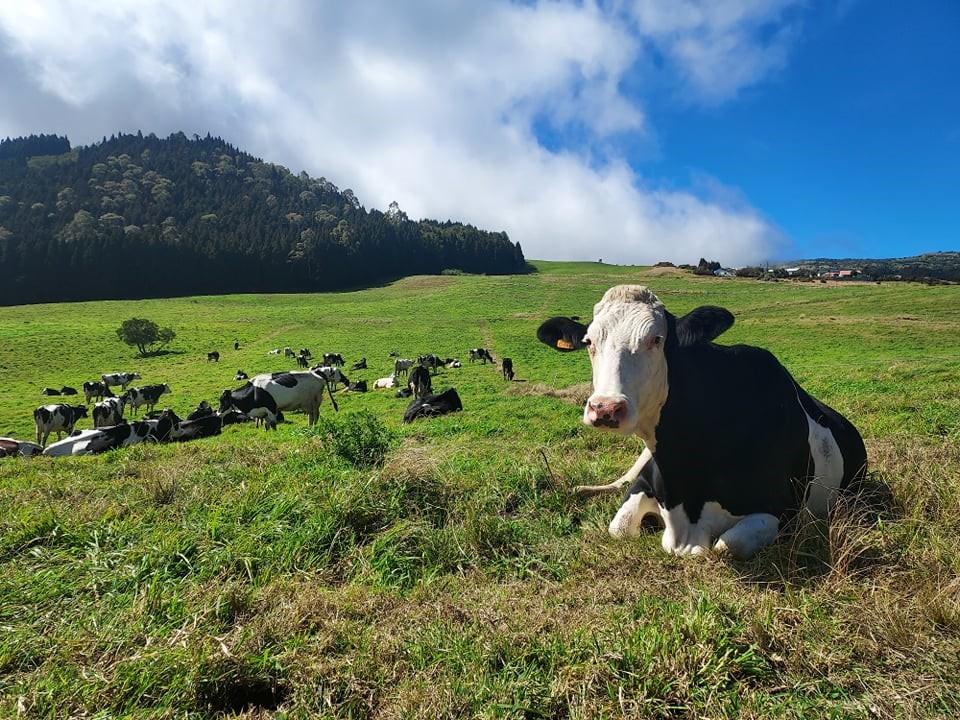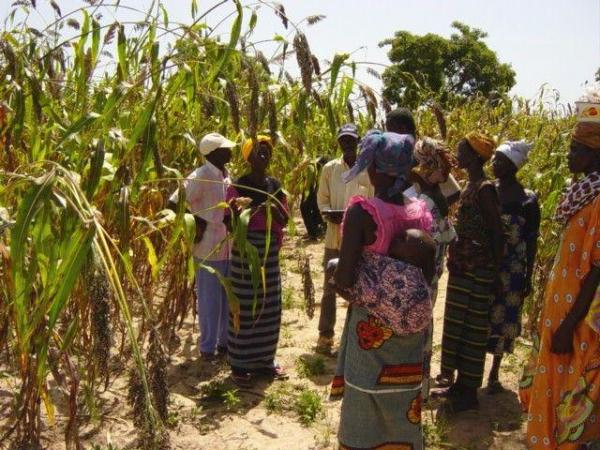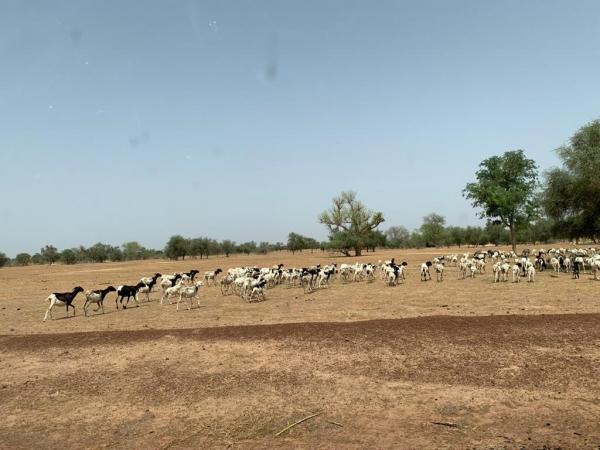Livestock farming in Réunion is characterized by the co-existence of more or less specialized farms belonging to structured value chains (centring on agricultural collectives and cooperatives - SICAs) and independent farms; in all, there are some 1200 farms, including beef and dairy farmers. With its almost forty years of experience of developing and professionalizing cattle farming in Réunion, the CIRAD livestock hub can claim a number of successes. In 2021, it was the subject of an ex post impact assessment, using the ImpresS ex post method, which CIRAD has already widely tried and tested on other innovation processes. The assessment was conducted in a context that was both positive, given the long history and richness of the process, and complex, in view of the pandemic, which restricted the number of face-to-face meetings. However, those constraints did not affect the relevance of the analyses and the results obtained.
Since its creation in 1987, the Réunion livestock hub has covered a wide range of topics: fodder and feed systems; animal health and reproduction; farm zootechnical and environmental performance assessments; livestock system modelling; effluent management; local races; and the inclusion of livestock farming in sustainable territorial development and the circular economy. As a result, it has developed a large number of sociotechnical innovations, in line with professionals' requirements.
Outlines of the study
The ImpresS ex post impact assessment, entitled "Analysis of the pathway followed by research support for development of cattle farming in Réunion", was conducted between November 2020 and February 2022. It was led by the SELMET joint research unit, an internationally recognized research collective working on livestock farming in Mediterranean and tropical zones, with methodological support from CIRAD's ImpresS team, via the ImpresS livestock Réunion (Imago) project. The aim was to take a critical, methodical look at the pathway followed by research support for development of cattle farming in Réunion, and at the socioeconomic changes and impacts to which the hub's research has contributed over the years. The study also looked at the types of requests made by local players, and how research has responded, including changes in research posture over time. The analysis combined multi-player participatory micro-workshops and interviews (involving some fifty people in all), and focused on research on dairy, breeding and fattening operations and fodder production between 1987 and 2020. It produced several outputs, including an impact pathway, a map of players, and an innovation story.
From "development research" to tackling global issues
The study highlighted the changes in the livestock hub's research in terms of the scale of analysis: from micro-plot (fodder collections) in the 1980s, through analyses of the interactions between crops and livestock on a plot level, then practices and performance on a herd level, to production and farming systems. That broadening of scale was accompanied by changes in terms of the research issues addressed, which were initially highly technical but subsequently also societal; and of research practices, from a thematic approach and in association with a few partners to interdisciplinary operations with a wider range of partners and on a territory scale.
The assessment pinpointed three main periods.
- Initially (1987-1993), the livestock hub acted as a technical institute, with substantial exchanges with the Chamber of Agriculture, the Union des associations foncières pastorales (UAFP) and the SICAs, conducting numerous experiments (notably on fodder production), on a plot and hard scale, adopting a development research posture. This period, designated that of the "certainty of development – the fodder revolution and major agricultural changes" was marked by strong technical development and increasing farm specialization, the aim being to address the concrete technical obstacles raised by livestock professionals.
- This was followed by a longer period (1994–2007) called that of the "generalization of the cooperative system, and the boom in dairy and beef production", marked by the aim of maintaining production and coverage of the local market. The year 1999 in particular saw a paradigm shift in terms of the livestock hub's research posture, from a thematic approach to a multidisciplinary one, with a growing interest in farm economics. This period was also when CIRAD came into line with the academic standards of international research and began tackling more global, strategic issues.
- Lastly, the current phase, as of 2008, was designated the "livestock crisis", since it has been marked by controversy surrounding development models and the farm health situation (leukosis and IBR). The livestock pole broadened out its research topics in response to society's expectations in terms of the environment and health or climate change in particular. The 2000s saw the start of a period in which concerns about the sustainability of livestock systems and their ability to recycle effluent have emerged. The livestock hub has gained its second wind, with livestock farming being included in moves to build a circular economy and work on the energy balances of certain value chains.
The decision to study a long history runs up against people's memory of events, which often fades in time or which may have been "rewritten". It is therefore essential to compare eyewitness accounts in order to build a pathway for tangible innovations. I think it is remarkable that our partners validated the decision to split history into three periods following interviews with research players, although they did suggest changing the titles given to those periods. Our decision also meant tracing people who had retired or left Réunion. What was nice is that all the people we contacted, whether from the research or development sectors, agreed to answer our questions and came to the workshops. I think this proves not only their willingness to take part in an introspective, reflective exercise looking at outputs, but the trust built between people from different organizations who worked together. Some of the people involved became friends rather than just colleagues.
Jean-Philippe Choisis
Zootechnician specializing in livestock systems, study leader
Results and operational recommendations
From the beginning, the livestock hub's support for management structures and cattle farmers in Réunion has helped to build skills among professionals in the cattle production sector.
The study showed that the innovation process has contributed to technical impacts such as:
- Improved reproduction performance (shorter intervals between calvings) thanks to the introduction of monitoring of both reproduction and animal nutrition (although the quality of reproduction monitoring has gradually fallen for lack of resources). For reference, in 1993, average annual milk production was 2200 litres per cow across the entire dairy herd, compared to 6200 litres in 2018;
- Reduced winter fodder shortages thanks to the rollout of wrapped silage bales. Since the 2000s, farmers and businesses have acquired silaging equipment. For reference, the number of round, wrapped bales increased from 400 in 1990 to 4000 in 1993. In 1995, the area harvested for silage was more than 600 ha, providing a fodder stock of more than 2000 tonnes of dry matter, compared to less than 100 ha prior to 1985. This approach, and substantial collaboration with the UAFP, facilitated the rollout of round bales. However, the technique has had one negative impact: an accumulation of plastic in the environment;
- Rational grassland management, to boost the feed value of both grazed and cut fodder. For reference, between 1975 and 1994, livestock farmers belonging to pastoral land associations set up 6200 ha of cultivated grassland. The UAFP's support of livestock farmers, in relation to the monitoring of rational grassland management initiated by the livestock hub, encouraged them to set up cultivated grassland. However, it was the UAFP's involvement and the funding and support provided by the Regional Council that made it possible;
- Better management of cattle feed rations and thus a reduction in production costs linked to concentrate purchases;
- Better fodder quality and farm technico-economic performance, for instance with the use of NIRS technology to assess the feed value of the fodder sold by SicaLait.
The contribution made to these impacts was facilitated by a coherent, coordinated technical network comprising the livestock hub, the SICAs, farms and the UAFP in particular, which the livestock hub helped to strengthen and professionalize.
The livestock hub also contributed to:
- The formalization of technical and economic objectives by cooperatives, thanks to its strategic decision support work;
- Greater credibility for the interprofessional organizations and cattle farmers' standpoint in terms of the preferred socioeconomic model for livestock farming in Réunion, thanks to social accounting matrices;
- Professionalization of farmers and technical management staff or the development of research and development activities within the Association réunionnaise de pastoralisme.
It is more difficult to pinpoint what the livestock hub has contributed to impacts on the development of cattle farming during the third period, due to its policy of more general research, less centred on technical improvements, and a lack of hindsight to be able to assess its impact.
However, any reading of all these impacts must take account of the following considerations:
- They can only partly be put down to research, in view of the major role of agricultural policy and the strategic choices made by cooperatives in term of value chain structuring;
- Their long-term future, through the adoption of new practices and their evolution, greatly depends on support measures and on farmer motivation, hence the importance of ongoing dialogue between researchers, partners and public players.
The causal links between changes in practice and the appropriation of research work are many and varied: development support by the livestock hub, support and incentives from influential major players, partners' promotion of research outputs, the livestock hub's posture as regards the professional societal expectations of cattle production chains, research in partnership, on-farm trials, capacity building among development technicians and livestock farmers, and so on.
The main recommendations made to livestock professionals in the study include the importance of anticipating people leaving the profession and of building a "memoir of research results" to ensure knowledge and skills are passed on and facilitate the appropriation of research work, clarifying the role of each organization (development and research), working to align the livestock hub's research activities better with grassroots expectations and requirements, and encouraging debriefing sessions on research operations, to foster dialogue with partners and public players.



























.jpg)
